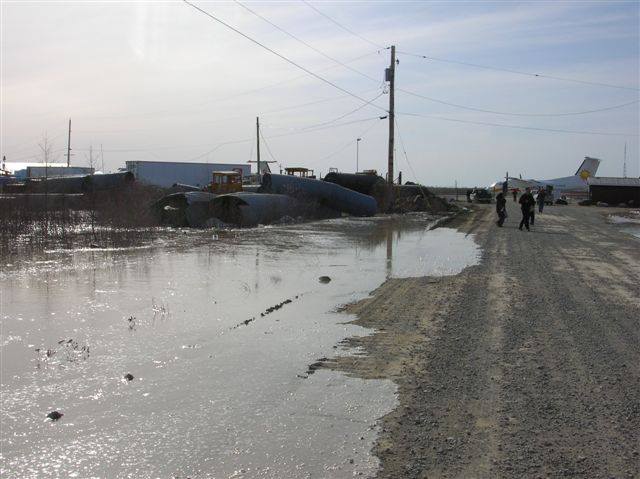Kashechewan sits on a flood plain next to the Albany River and has been inundated during the spring thaw every year for more than a decade
After yet another spring evacuation – and rallies organized by band members at Queen’s Park and Parliament Hill – the First Nation of Kashechewan has secured a tripartite agreement with the Province of Ontario and the federal government to re-locate its flood-ravaged community.
Kashechewan sits on a flood plain next to the Albany River and has been inundated during the spring thaw every year for more than a decade. A 2005 relocation agreement with Paul Martin’s Liberals was subsequently scrapped by Conservative Prime Minister Stephen Harper. Kashechewan signed another agreement with the current Liberal government in 2017, only to watch Justin Trudeau lose interest.
Following a perceived lack of action, protests were organized in Toronto and Ottawa in April to demand that a comprehensive plan be put in place. On May 9, after 10 days of rallies and negotiation and with 300 community members present, Chief Leo Friday signed a revised version of the 2017 agreement in Toronto. The agreement commits to move the entire community within eight to 10 years, outlines a work plan as to how the move will go forward and details individual responsibilities for each level of government.

“It is an agreement that has to be worked on hard for the next few years,” Chief Friday told the Nation. “I believe it will take some time before things are ironed out.”
Indeed, the agreement signed by Chief Friday, federal Indigenous Services Minister Seamus O’Regan and Ontario Indigenous Affairs Minister Greg Rickford takes care to note that, “while this Revised 2019 Framework Agreement is entered into in good faith, it does not create legally binding obligations for the Parties.”
But Friday is still cautiously optimistic the two levels of governments will actually follow through this time.
“I just want to see the road to the new site so people can stay in the springtime instead of going out in the plane to Timmins and all those places in the area,” he said. “I hope that something can be done soon to make this happen.”
At the moment, Friday said parts of the community are covered in raw sewage due to backups in the sewer system. Meanwhile, community members are being housed at hotels in Timmins, Cochrane, Kapuskasing, Hearst and Thunder Bay.
“We had trouble with the sewer system, it overflowed through the manholes and backed up into the streets,” Friday said. “It looked like a muddy James Bay lake but actually it was raw sewage – one street was completely flooded.”
Close to 500 people live on the flooded street, he said, adding that it will have to be assessed and tested for E. coli.
“You know how it is when kids are back in the community,” Friday observed. “They play in the streets, in the grass and in the gravel, and if they happened to put their hands into their mouths that could be very serious and get kids sick. So that’s why we want to test it out first before we can go home.”
The proposed new location, known as Site 5, is the same spot 34 kilometres upriver from the community that was identified in 2005 when the first agreement was signed with the federal government. The first step will be to plan and build a new access road that will allow for land surveys and the eventual transportation of construction equipment and building materials to the site.
“There’s going to be some monies available to do the study, survey, management and construction and Ontario is going to look at where the crown land is and where they want to put the road,” Friday noted. “The agreement is that we will move forward with the construction of the road this summer, and get the money underway to hire a project manager.”
According to the new agreement, crown land will be designated as reserve for construction to go forward. Funding is still up in the air, with costs estimated at $500 million to $1 billion, but Indigenous Services Minister Seamus O’Regan said Canada’s financial contribution would be “significant”.
Kashechewan will examine existing infrastructure to see what can be salvaged and tally its community members in order to plan for the construction of the new community.
“Some assets will be removed and other stuff will be assessed,” said Friday. “Buildings that are moldy and rusty and rotten will be left behind. We’re going to do some kind of house inventory to determine that. What also needs to be done, for our part, is to get a population census.”
Then, in eight to 10 years, perhaps Kashechewan will finally be able to move past its annual ordeal of flooding, migration, and cleaning up.





